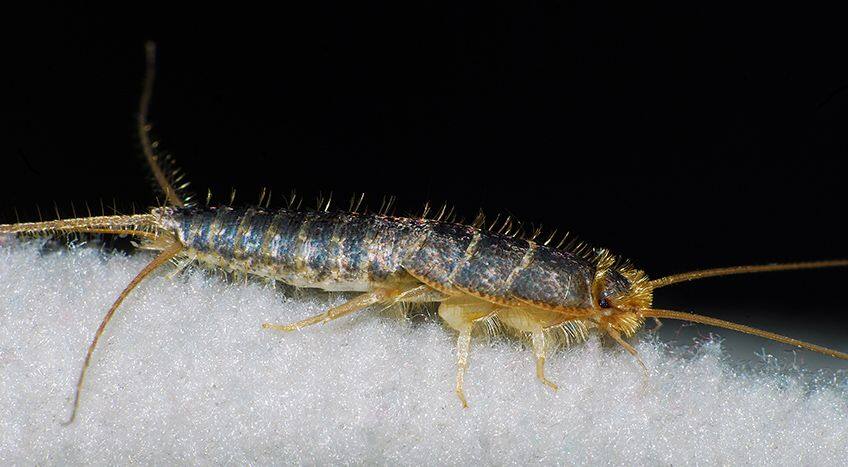If you notice these small, wingless insects, you’re not alone. There are several reasons for their presence, including their food source and habitat. There are also several ways to get rid of them, including traps. In this article, we’ll discuss some of the more common methods. Whether you’re looking for a home treatment solution or want to prevent further infestation, you’ll find useful information here. In addition, you’ll learn about the different types of silverfish, including the most common ones and their corresponding methods. Contact our expert Silverfish pest control for treatment.
Silverfish Symptoms
One of the first signs that you may have a silverfish infestation is seeing live silverfish. While a single silverfish may look harmless, it is often accompanied by a multitude of these bugs. You may also notice silverfish droppings, which are black and spherical in shape. These are often found around the area where the silverfish feed. If you’re unsure whether you have silverfish, call a pest control professional to conduct a thorough inspection.
While bite marks from silverfish are not common, you should be aware of the fact that they don’t like humans. Their mandibles are too weak to actually bite humans. They are mostly interested in starchy and sugary foods and like to feed on dead skin cells. The silverfish’s tiny mouth doesn’t allow it to do much more than chew its food, so you should avoid them as much as possible.
Silverfish Habitat
Silverfish are nocturnal pests, and they prefer dark, damp areas. They are particularly attracted to moist soil and organic debris. They do not like direct sunlight, and will therefore avoid places where the light is intense. They are also known to damage some types of fabric, including silk and synthetic materials. Because of this, the habitat of silverfish should be considered before applying insecticides. If you suspect that the silverfish are already living in your home, take steps to eliminate them or contact Atpmspest which is Australia’s best pest control company they have an expert pest control team that helps you in pest control.
Acrotelsella devriesiana, a member of the LEPISMATIDAE family, lives primarily in southern and central Australia. They can be found in leaf litter, rock crevices, and under the bark. Silverfish are known to cause damage to a variety of fabrics, including textiles and paper. They also destroy cereals, books, and papers, and they can gnaw at wallpaper. Severe infestations can leave irregular holes in the wall.
Food sources
Food sources for silverfish include anything made of starch and polysaccharides. Common sources include sugar, flour, cereals, books, papers, and photos. They can also eat human hair and fibres. In addition to these common food sources, silverfish can also wreak havoc on valuable books and papers. When a silverfish finds a place to live, you should treat it with care and keep the contents of your home clean and dry.
To control the population of silverfish in your home, start by eliminating their food sources. Silverfish are attracted to moist areas and tend to nest in damp basements and bookshelves. Once they’re established, they’ll seek out food sources. They also like cereal, grains, and beans, as well as pet hair. You can also keep food items sealed in airtight plastic containers to prevent them from entering your home.
Traps for Silverfish
When it comes to trapping silverfish, there are different methods. You can use newspaper to trap the pests, stomp on the newspaper and discard it. If you have a bad infestation, you can also burn the newspaper and get rid of the silverfish. You can also use traps in the open areas of the house, like under the sinks, in the garage, and so on. Insecticide dusts can also be used to kill silverfish.
The first method is to set traps near food sources. Silverfish will come in contact with these sources and will start to feed. If you put out food or paper, the silverfish will move quite quickly. They can also eat carpets, paper, and wallpaper, which is why you need to set traps in areas where they feed the most. If you don’t want to use bait, you can also use a glue trap.
Also Read: Diatomaceous Earth for Insect control
Allergies
Allergies to silverfish are caused by the allergens in the exoskeleton of these insects. The allergens can bind together with those of other common indoor pests to create a stronger allergic reaction. In fact, some people are allergic to both silverfish and dust mites. Therefore, it’s important to get rid of silverfish from your home if you are suffering from any of these allergies.
The silverfish leaves behind several particles of debris in their droppings. These particles can be very irritating to those with allergies. Silverfish stings can be extremely painful and cause blistering, itchiness, and swelling. In severe cases, a person may even experience anaphylaxis (a life-threatening allergic reaction).
Silverfish Prevention
The best way to prevent silverfish infestations is to control the humidity level in your home. They prefer humid environments. Keep your home free of clutter, especially in the bathroom. Avoid leaving wet clothes lying around on the bathroom floor. If you are unable to control the humidity level, you can use an insecticide to get rid of silverfish. Also, try to store dry foods in sealed containers to prevent moisture. You can also keep silverfish away from starches and saccharides by dusting.
Aside from minimizing the amount of moisture in your home, prevention is easier than you might think. The best way to reduce humidity is to use proper ventilation. Consider adding fans, heated towel racks, or silica gel packs to your home. Another great way to minimize the humidity is by removing dust, since silverfish love dust. In addition to eliminating dust, you can also clean wood floors with an oil-based soap, and keep your rugs and carpets clean and dry.
Also Read: Who is Responsible for Pest Control in a Rental Property?

